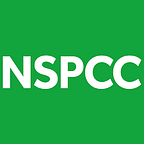Website photography: a picture paints a thousand words
This week we’re looking at how charity websites champion diversity and inclusion through photography.
At the NSPCC we have to ensure our website holds a mirror up to the world we work in. If we want to protect children today and prevent abuse from happening tomorrow we need to reach all parents, carers and anyone worried about a child. We need to show everyone that we’re an organisation they can trust. And that we’re here for them.
Our website has been around for some time (this article from Kirsty Weakley shows just how much charity websites have changed in the last 20 years!) and has gone from a largely text-based site to one that’s crammed with imagery. Our recent-ish website redevelopment in 2014 ushered in a new brand and, with it, new photography. But, as with all things digital, you have to keep moving to stay relevant. So we’re in the fun process of auditing every image on our website and making sure we’re working hard to be inclusive.
While that fun task ticks away in our Digital Content team, it’s a good time to look at others in the charity sector and see how they’re making inclusion work.
St Mungo’s
2019 marks the 50th anniversary of St Mungo’s. The charity are highlighting 50 stories across the year and using photography of their clients, volunteers and staff. Putting their clients at the forefront of their content helps bring authenticity to their website — and further empowers those who have shared their story with the world.
Barnardo’s
In 2016 Barnardo’s launched their Believe In Me campaign. The campaign page highlights the stories of three young people and uses photography to show that they’re from different ethnic groups. Where their imagery really sings is the campaign video — showing young people performing in different settings. When I was a kid and living in a pre-Goodness Gracious Me world, whenever a British Asian person was on the telly we’d shout the house down calling for each other to “Come! Look!” Now there’s an Asian kid in an advert with the statement ‘I am not my 17 foster homes’ laid over him. As weird as it sounds, that’s important. I can only imagine how a young person who encounters it feels.
Save the Children UK
The ‘white saviour’ is something we encounter time and time again (Stacey Dooley and MP David Lammy have been butting heads over it just this week). And it’s something UK charities working both locally and internationally have to be mindful of. Save the Children UK’s website illustrates its services with practitioners and professionals from diverse backgrounds — more often than not, they’re from the region they’re working in. It sounds like a really simple thing but it’s a mistake we’ve accidentally made at the NSPCC on our website when juxtaposing images— it’s easily done but shouldn’t happen in the first place.
Macmillan
As soon as you land on Macmillan’s homepage, you know they’re here for you no matter who you are. Their header banner video scrolls through a range of age groups, ethnic groups and genders. Their new We’re right there with you campaign video does the same. And, to take us back to that mirror metaphor, includes a young woman in a hijab looking into a, err, mirror.
Scope
Scope have recently redesigned their website and put inclusion and accessibility at the forefront. As you’d expect, their photography reflects the lives of disabled people — both those with visible and hidden disabilities. And that’s important because ‘disability’ means more than a handful of common tropes. They’ve written some great news stories about inclusion, accessibility and design which are well worth reading: Inclusion and accessibility for our new website and Designing content to achieve everyday equality.
Young Minds
Young Minds are fighting for young people’s mental health. Not only do they show young people from a range of ethnic backgrounds across their website they also show different bodies and religions. And they show lots of teenage boys and young men — a group who need representation by mental health charities. We know how hard it is for young men to talk about their mental health (our Childline Things guys don’t talk about shines a light on this) so it’s important they are represented in digital spaces.
So what can you expect to see on our website? We have a fantastic range of images to choose from and we’re excited to make sure our website is more representative of the children and families we support across the UK, Channel Islands and Isle of Man. We’ll end with some of what you can expect to see across our entire site in the coming months.
